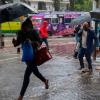Dark Worship: Inside Kenya's Secret Religious Networks

A comprehensive report released by the National Crime Research Center (NCRC) on November 11 has exposed concerning developments within Kenya's religious landscape.
The study documents an increase in destructive practices that are being perpetrated under the guise of religious instruction, particularly targeting vulnerable populations. The investigation has uncovered disturbing patterns where religious leaders exploit followers' vulnerabilities by promising solutions to personal difficulties through prosperity gospel, divine healing, and spiritual enlightenment. This manipulation has led some Kenyans to abandon conventional medical treatment and formal education in favor of clandestine worship practices.
The resulting cult-like dynamics make followers increasingly resistant to questioning their leaders' authority or motivations. Perhaps most concerning is the deliberate misinterpretation of religious texts to justify harmful practices. The report specifically cites the devastating example of Pastor Paul Mackenzie, whose teachings culminated in the Shakahola tragedy where more than 200 followers perished from self-imposed starvation, believing it would secure their passage to heaven.
The phenomenon appears particularly concentrated in several counties, including Kilifi, Nakuru, Kisumu, and Kwale, with a notably stronger presence in rural areas compared to urban centers. These religious movements have demonstrated significant reach, drawing followers from beyond Kenya's borders. The study reveals that attempts to leave these groups often result in severe consequences, ranging from intimidation and social isolation to physical violence.
Several unexplained deaths among former members have also raised suspicions of possible retaliation. In response to these findings, the NCRC has advocated for enhanced governmental oversight of religious institutions. The report specifically highlights the prevalence of untrained religious teachers and calls for more stringent regulatory frameworks to address this vulnerability.














Add new comment